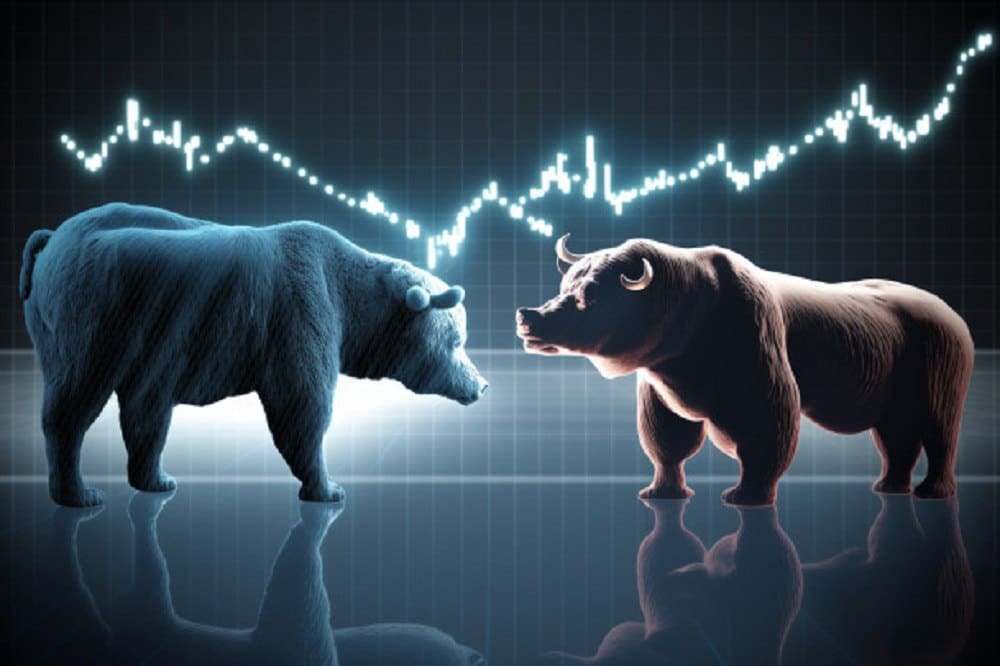The state of the market may be unpredictable and is often categorised as bullish or bearish. Knowing these definitions can help you weather market storms. Many positive and negative factors can influence whether a market is expanding or contracting. When asset values are going up, it’s called a bull market; when they’re going down, it’s called a bear market. Investors need to be mindful of each of these outcomes. Since market volatility is inevitable, successful investing requires a comprehensive knowledge of the market and its trends.
Recognising the Bull Market
Stock and other asset values climb steadily during a bull market for an extended period because investors feel optimistic and confident. People who believe an asset will increase in value are said to be “bulls,” Their optimism often leads them to buy as much of the asset as they can afford. Other investors take notice, driving up demand and driving up the price. The market is optimistic when prices have increased by 20% over a prolonged time, and there is an increase in initial public offering activity. The S&P 500 index had the longest bull market in history from 2009 to 2020, rising steadily until the advent of the COVID-19 pandemic.
How to Profit from a Bull Market
If you’re an investor who wants to maximise your profits, you need to know how to take advantage of any market condition. Traders and investors may get the most from a bull market if they are prepared with the necessary methods.
Investor optimism in a stock’s or asset’s value is the primary force behind a bull market. Interestingly, this is often the most excellent approach to capitalising on a rising market. Investors are advised to acquire and hold more assets during these times and then sell when prices rise again.
Increased purchasing and holding may also be profitable during a bull market. In this method, investors add to their holdings of an asset or security every time its value rises.
Furthermore, investors can take advantage of opportunities to buy low and sell high during a bull market. Even in a rising market, prices might fall somewhat, giving investors a chance to recoup losses. That way, they’ll have a leg up on the competition when the price eventually goes up again.
Recognising the Bear Market
Simply put, a bear market is the polar opposite of a bull market. A lengthy period of low investor interest and plunging asset values characterises a bear market. When investors stop believing in an asset’s value, the market is saturated with people expecting prices to fall even more.
A bear market is often defined as a prolonged depreciation of 20% or more in asset value. Joblessness rises as the economy slows, and asset and commodity demand falls, leading to an oversupply.
The market collapse of 1987, which saw prices fall by 29.6 percent over the course of three months, is a textbook example of a bear market. Investors may benefit from a bear market by purchasing cheap assets and holding on to them until the market recovers. Many investors have found this method to be fruitful.
Bottom line
Long-term and short-term investing patterns alternate, so investors can expect to experience both bull and bear markets throughout the course of their careers. Knowing the current market climate is essential for making sound financial choices. Managing the two markets is critical to maximising investment returns due to the significant potential influence each has on capital. However, investors should remember that the stock market has long-term potential for growth, so waiting for a market turnaround before selling is a reasonable strategy.
At Tokenhell, we help over 5,000 crypto companies amplify their content reach—and you can join them! For inquiries, reach out to us at info@tokenhell.com. Please remember, cryptocurrencies are highly volatile assets. Always conduct thorough research before making any investment decisions. Some content on this website, including posts under Crypto Cable, Sponsored Articles, and Press Releases, is provided by guest contributors or paid sponsors. The views expressed in these posts do not necessarily represent the opinions of Tokenhell. We are not responsible for the accuracy, quality, or reliability of any third-party content, advertisements, products, or banners featured on this site. For more details, please review our full terms and conditions / disclaimer.
